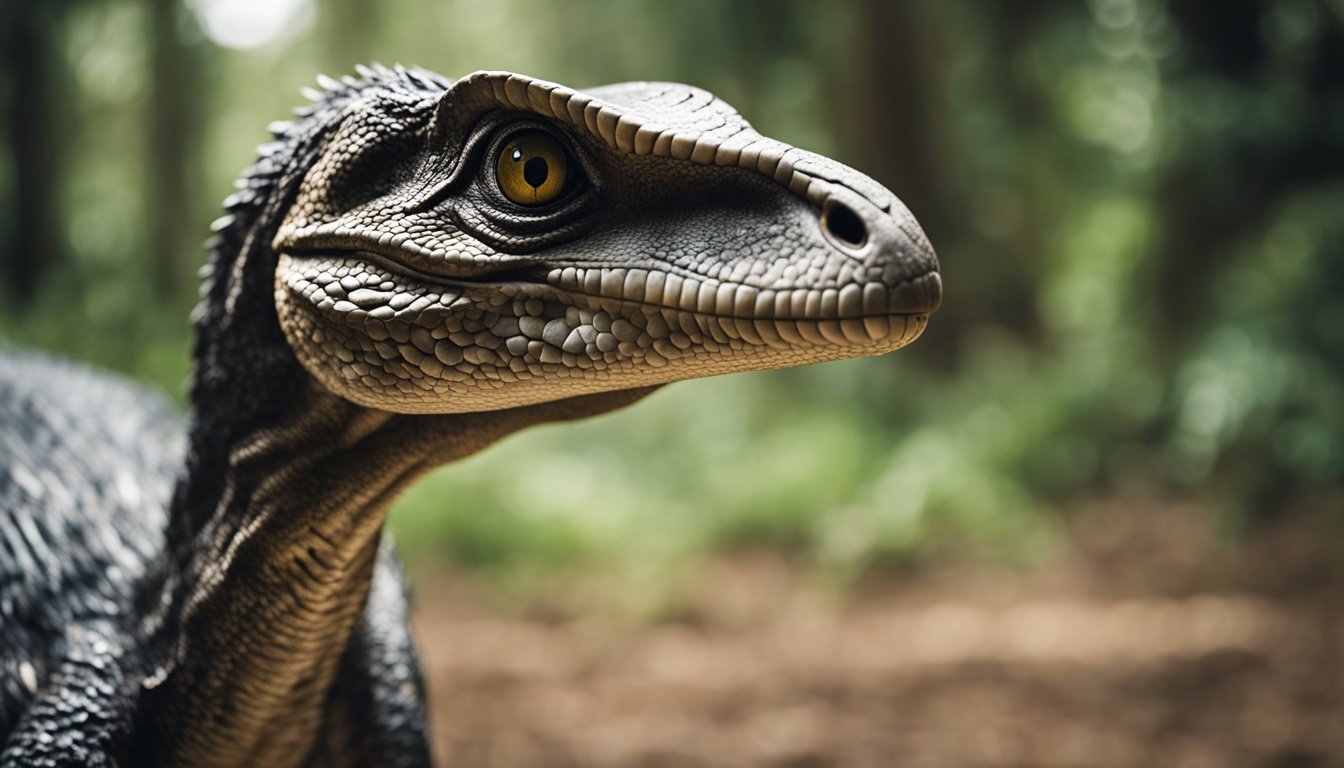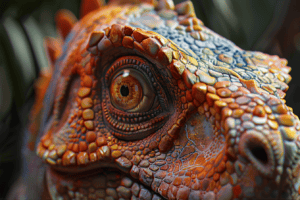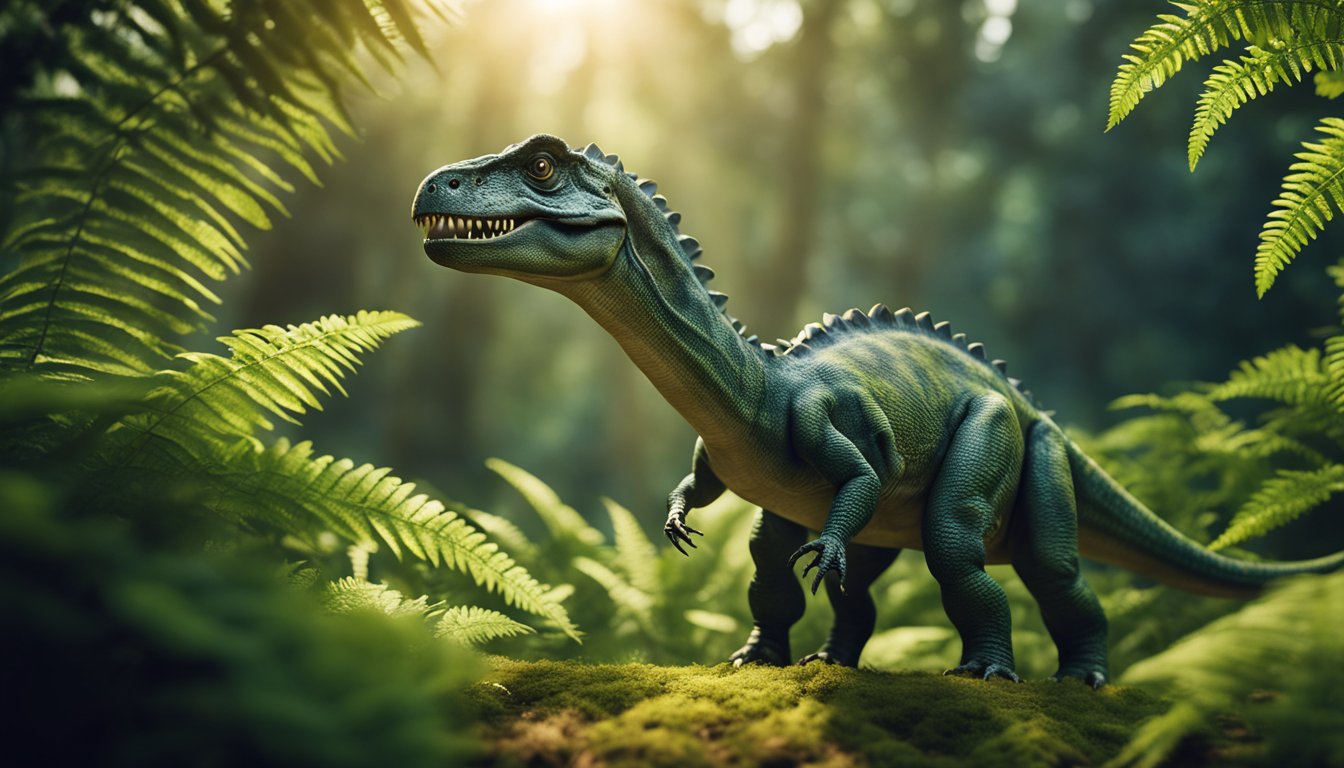Velociraptors are one of the most iconic dinosaurs of all time, thanks in large part to their portrayal in the Jurassic Park movies.
But how much do we really know about these fascinating creatures?
In this article, we’ll explore the truth behind the Jurassic legend and uncover some surprising facts about these speedy predators.

First discovered in the Gobi Desert of Mongolia in the 1920s, Velociraptors were actually much smaller than their on-screen counterparts, standing only about two feet tall and weighing in at around 30 pounds.
Despite their diminutive size, they were still formidable hunters, with sharp teeth and retractable claws that could slice through flesh with ease.
While the Velociraptors of Jurassic Park are depicted as scaly, reptilian creatures, the truth is that they were actually covered in feathers.
In fact, many scientists believe that all dinosaurs were feathered to some extent, a fact that has only come to light in recent years.
So if you thought Velociraptors were cool before, just imagine them strutting around with brightly-colored plumage!
The Real Velociraptor Versus Hollywood’s Portrayal
Jurassic Park’s Influence on Raptor Reputation
When most people think of Velociraptors, they picture the ferocious, intelligent predators from the Jurassic Park movies.
However, Hollywood’s portrayal of these dinosaurs is far from accurate.
The raptors in the movies are much larger than their real-life counterparts, and they’re depicted as having scaly skin and no feathers.
Jurassic Park’s influence on our perception of Velociraptors is undeniable.
The movie’s groundbreaking use of animatronics and puppetry brought the creatures to life in a way that had never been seen before.
However, the film’s portrayal of the raptors as pack hunters that could open doors and outsmart humans is pure fiction.
Separating Fact from Fiction
In reality, Velociraptors were much smaller than the ones in the movies, standing only about two feet tall at the hip and weighing around 30 pounds.
They were also covered in feathers, not scales, which is a fact that only came to light in the late 1990s when fossils of feathered dinosaurs were discovered in China.
While Velociraptors were certainly fierce predators, they were not the unstoppable killing machines that Hollywood has made them out to be.
They likely hunted in small groups, and their diet consisted of small animals like lizards and mammals.
It’s important to remember that Hollywood takes artistic license when it comes to portraying dinosaurs.
Filmmakers like Steven Spielberg and special effects artists like John Rosengrant are more concerned with creating an entertaining movie than being scientifically accurate.
As a result, the raptors in Jurassic Park are not a reliable source of information when it comes to understanding these fascinating creatures.
In conclusion, while Hollywood’s portrayal of Velociraptors is exciting and entertaining, it’s important to separate fact from fiction.
By examining the real scientific evidence, we can gain a better understanding of these amazing creatures and their place in the prehistoric world.
Unearthing Velociraptor: Fossils and Discovery

Mongolia: A Treasure Trove of Fossils
Mongolia is known for its vast and desolate Gobi Desert, which has been a treasure trove of fossils for paleontologists.
It was here that in 1923, the first Velociraptor fossil was discovered by the American Museum of Natural History’s Central Asiatic Expeditions.
The findings were published in 1924 by the expedition’s leader, Roy Chapman Andrews, in a book called “The New Conquest of Central Asia.” The book described the discovery of a small, agile predator with sharp teeth and claws, which was later named Velociraptor.
Paleontologists have since found many more Velociraptor fossils in Mongolia, shedding light on the dinosaur’s physical characteristics and behavior.
The fossils have also helped scientists understand the ecosystem of the Gobi Desert during the Late Cretaceous period, which was about 75 to 71 million years ago.
Significant Finds and Their Impact
One of the most significant Velociraptor fossils found in Mongolia is the “Fighting Dinosaurs,” which was discovered in 1971.
The fossil consists of two dinosaurs, a Velociraptor and a Protoceratops, preserved in combat.
The fossil provides evidence that Velociraptor was a predator that hunted in packs and could take down prey much larger than itself.
Another significant find is the “Deinonychus antirrhopus,” which was discovered in Montana, USA, in 1964.
The Deinonychus is a close relative of Velociraptor and has helped paleontologists understand the physical characteristics of Velociraptor, including its feathers.
Velociraptor fossils have also been found in other parts of the world, including China, Japan, and Canada.
These findings have expanded our understanding of the dinosaur’s range and evolution.
In conclusion, Velociraptor fossils found in Mongolia and other parts of the world have provided valuable insights into the physical characteristics and behavior of this iconic dinosaur.
These discoveries have helped paleontologists better understand the ecosystem of the Late Cretaceous period and the evolution of dinosaurs.
Understanding Velociraptor Biology

Velociraptor, one of the most famous predatory dinosaurs of the world, is known for its sharp teeth, sickle-shaped claw, and distinctive feathers.
In this section, we will explore the anatomy and physical traits of Velociraptor, as well as its hunter’s diet and behavior.
Anatomy and Physical Traits
Velociraptor was a small, carnivorous dinosaur that lived during the Late Cretaceous period, about 74-70 million years ago.
It had a sleek, lightweight body that was covered in feathers, which helped it regulate its body temperature and provided insulation.
The feathers also helped Velociraptor to glide through the air, similar to the way a flying squirrel does.
Velociraptor had a long, stiff tail that helped it maintain balance and agility while hunting.
It also had a powerful jaw with sharp, serrated teeth that were used to tear apart its prey.
Its most distinctive feature was its sickle-shaped claw, which was about 6 inches long and used to slash and disembowel its victims.
The Hunter’s Diet and Behavior
Velociraptor was a pack hunter, which means it hunted in groups.
This allowed it to take down larger prey, such as Protoceratops, which were too big for a single Velociraptor to tackle alone.
Velociraptor was also a nocturnal hunter, which meant it was more active at night when its prey was less alert.
Velociraptor was a carnivorous dinosaur, which means it ate other animals. Its diet consisted mainly of small mammals, lizards, and other dinosaurs.
To catch its prey, Velociraptor would use its sharp teeth and sickle-shaped claw to inflict deadly wounds.
It would then use its powerful jaw to tear apart its victim and consume its flesh.
One interesting fact about Velociraptor is that it had a scleral ring, which is a bony ring around the eye that helps to support and protect it.
This suggests that Velociraptor had excellent vision, which would have been useful when hunting at night.
In conclusion, Velociraptor was a small, feathered, pack-hunting dinosaur with sharp teeth, a sickle-shaped claw, and excellent vision.
Its diet consisted mainly of small mammals, lizards, and other dinosaurs, and it was a nocturnal hunter.
Its distinctive features and hunting behavior have made it one of the most popular dinosaurs in the world.
Frequently Asked Questions

How big were Velociraptors compared to modern-day animals?
Velociraptors were about the size of a turkey, with an average length of 6 feet (1.8 meters) and a height of 1.6 feet (0.5 meters).
Their weight varied between 30-50 pounds (13-22 kg), which is similar to the weight of a medium-sized dog.
Compared to modern-day animals, Velociraptors were smaller than most of today’s predators, such as lions, tigers, and bears.
What was the primary diet of a Velociraptor?
Velociraptors were carnivorous, which means they ate meat. Their primary diet consisted of small animals, such as lizards, mammals, and birds.
They were also known to hunt in packs, which helped them to take down larger prey.
Can you name some unique traits that set Velociraptors apart from other dinosaurs?
Velociraptors were known for their sharp, curved claws on their hind legs, which they used to grip their prey.
They also had a long, stiff tail that helped them maintain balance while running.
Velociraptors were also one of the most intelligent dinosaurs, with a brain size that was proportionally larger than most other dinosaurs.
What tactics did Velociraptors use to catch their prey?
Velociraptors were fast and agile runners, capable of reaching speeds of up to 40 miles per hour (64 kilometers per hour).
They used their sharp claws to grip their prey and their long tail to maintain balance while running.
Velociraptors were also known to hunt in packs, which allowed them to take down larger prey.
In what type of environment did Velociraptors make their homes?
Velociraptors lived in a variety of environments, including forests, grasslands, and deserts.
They were most commonly found in what is now Mongolia and China during the Late Cretaceous period, about 75 million years ago.
How accurate are the depictions of Velociraptors in popular media?
Depictions of Velociraptors in popular media, such as the Jurassic Park movies, are not entirely accurate.
For example, Velociraptors were actually covered in feathers, not scales.
They were also smaller than their movie counterparts, and their behavior was likely different from what is shown in the movies.
However, the depictions in popular media have helped to bring attention to these fascinating creatures and inspire interest in paleontology.







